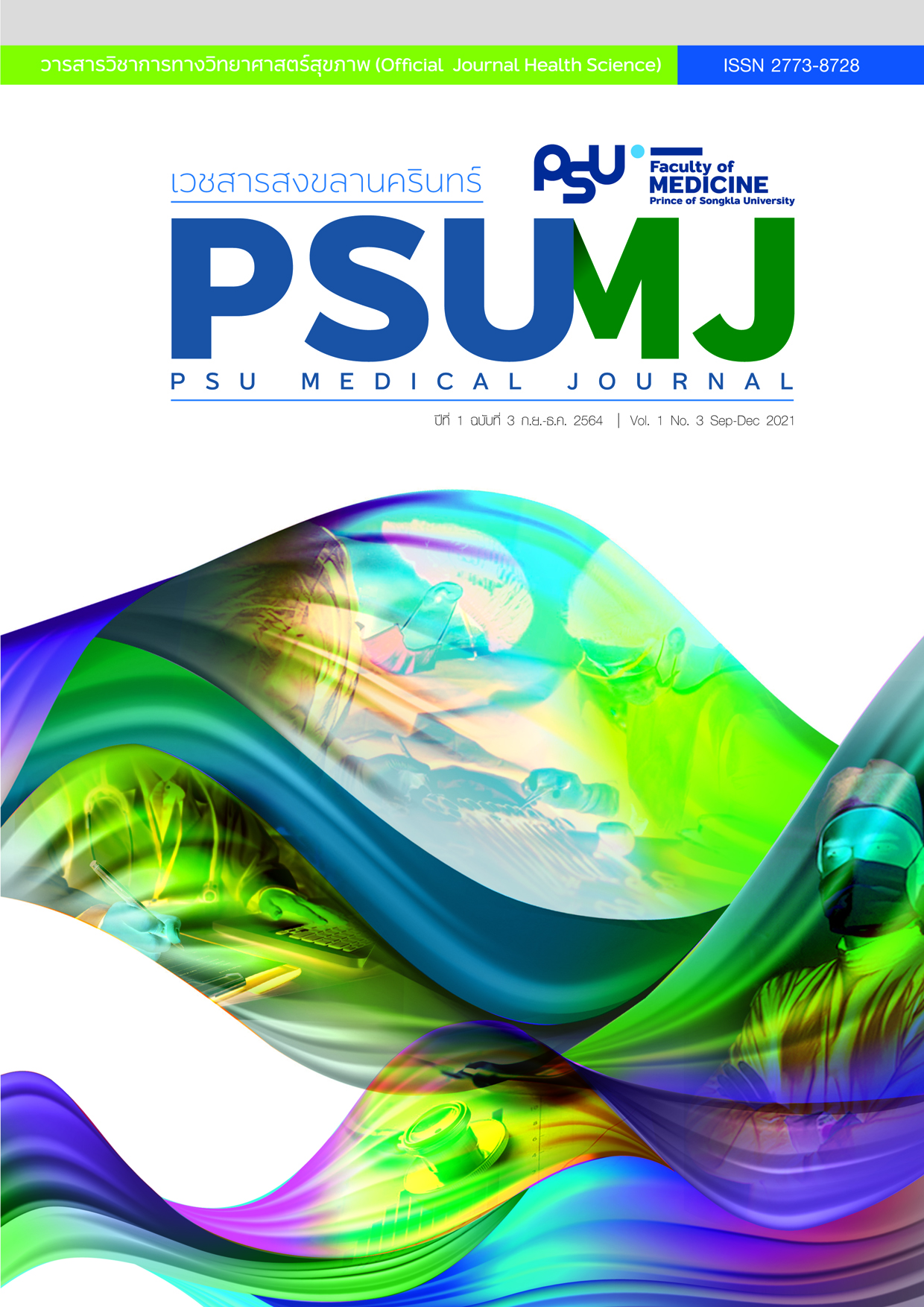Chemotherapy Induced Nausea and Vomiting in Children: A Literature Review and Recommendation for Antiemetic Prophylaxis in Resource Limited Countries
Chemotherapy Induced Neusea and Vomiting in Children
DOI:
https://doi.org/10.31584/psumj.2022250660Keywords:
antiemetic agents,, chemotherapy induced nausea and vomiting, childhood cancer, guidelinesAbstract
Chemotherapy induced nausea and vomiting (CINV) are the most common side effects that impacts quality of life in children receiving cancer treatment. Inadequately controlled CINV impairs functional activity increases the healthcare utilization and compromises treatment adherence. The availability of new antiemetic agents results in substantially improvement of emetic control; however, in real-world practice, many developing countries have limited access to newly-developed antiemetic agents. This is a major obstacle in achieving adequate CINV control. Recent studies have recommended the “triple therapy” regimen (a 5-HT3 antagonist, dexamethasone, and a neurokinin-1 antagonist), as the backbone for antiemetic prophylaxis. Olanzapine, an atypical antipsychotic drug that improves CINV control in adult cancer patients. Together with ‘triple therapy” olanzapine is now recommended as the first line CINV prophylaxis in adults receiving highly emetogenic chemotherapy.
Herein, we reviewed the recent published guidelines for the prevention and treatment of CINV in children.
Furthermore, due to limited drug accessibility to neurokinin-1 antagonists, we proposed an institutional CINV guideline to replace the neurokinin-1 antagonist with olanzapine, which might be more reasonable in terms of economic constraints in resource limited countries.
References
Children’s Oncology Group: COG supportive care endorsed guidelines. [homepage on the Internet] Chidren’s Oncology Group; [cited 2021 Mar 27] Available from: https:/children soncologygroup.org/downloads/COG_SC_Guideline_Document.pdf
Hesketh PJ, Kris MG, Basch E, Bohlke K, Barbour SY, Clark-Snow RA, et al. Antiemetics: ASCO guideline update. J Clin Oncol2020;38:2782-97.
Hesketh PJ. Chemotherapy-induced nausea and vomiting. N Engl J Med 2008;358:2482-94.
Dupuis LL, Boodhan S, Holdsworth M, Robinson PD, Hain R, Portwine C, et al. Guideline for the prevention of acute nausea and vomiting due to antineoplastic medication in pediatric cancer patients. Pediatr Blood Cancer 2013;60:1073-82.
Dupuis LL, Robinson PD, Boodhan S, Holdsworth M, Portwine C, Gibson P, et al. Guideline for the prevention and treat- ment of anticipatory nausea and vomiting due to chemotherapy in pediatric cancer patients. Pediatr Blood Cancer 2014;61:1506-12.
Flank J, Robinson PD, Holdsworth M, Phillips R, Portwine C, Gibson P, et al. Guideline for the treatment of break through and prevention of refractory chemotherapy-induced nausea and vomiting in children with cancer. Pediatr Blood Cancer 2016;63:1144-51.
Aapro M. CINV: still troubling patients after all these years. Support Care Cancer 2018;26:5-9.
Paw Cho Sing E, Robinson PD, Flank J, Holdsworth M, Thackray J, Freedman J, et al. Classification of the acute emetogenicity of chemotherapy in pediatric patients: A clinical practice guideline. Pediatr Blood Cancer 2019;66:e27646
Sherani F, Boston C, Mba N. Latest update on prevention of acute chemotherapy- induced nausea and vomiting in pediatric cancer patients. Curr Oncol Rep 2019;21:89.
Patel P, Robinson PD, Thackray J, Flank J, Holdsworth MT, Gibson P, et al. Guideline for the prevention of acute chemo-therapy-induced nausea and vomiting in pediatric cancer patients: a focused update. Pediatr Blood Cancer 2017;64:e26542.
Kovacs G, Wachtel AE, Basharova EV, Spinelli T, Nicolas P, Kabickova. Palonosetron compared with ondansetron in pediatric cancer patients: multicycle analysis of a randomized phase III study. Future Oncol 2017;13:1685-98.
Jin Y, Sun W, Gu D, Yang J, Xu Z, Chen J. Comparative efficacy and safety of palonosetron with the first 5-HT3 receptor antagonists for the chemotherapy-induced nausea and vomiting: a meta-analysis. Eur J Cancer Care 2013;22: 41-50.
Phillips RS, Friend AJ, Gibson F, Houghton E, Gopaul S, Craig JV, et al. Antiemetic medication for prevention and treatment of chemotherapy-induced nausea and vomiting in childhood. Cochrane database of systematic review 2016.
Patel P, Olteanu A, Cabral S, Santesso N, Robinson PD, Dupuis LL. Dexamethasone dosing for prevention of acute chemotherapy-induced vomiting in pediatric patients: a systematic review. Pediatr Blood Cancer 2020;67:e28716.
Kang HJ, Loftus S, Taylor A, DiCristina C, Green S, Zwaan CM. Aprepitant for the prevention of chemotherapy-induced nausea and vomiting in children: a randomized, double-blind, phase 3 trial. Lancet Oncol 2015;16:385-94.
Radhakrishnan V, Pai V, Rajaraman S, Mehra N, Ganeson T, Dhanushkodi M, et al. Olanzapine versus metoclopramide for the treatment of breakthrough chemotherapy-induced vomiting in children: an open-label, randomized phase 3 trail. Pediatr Blood Cancer 2020;67:e28532.
Lau Moon Lin M, Robinson PD, Flank J, Sung L, Dupuis LL. The safety of metoclopramide in children: a systematic review and meta-analysis. Drug Saf 2016;39:675-87.
Navari RM, Gray SE, Kerr AC. Olanzapine versus aprepitant for the prevention of chemotherapy-induced nausea and vomiting: a randomized phase III trial. J Support Oncol 2011;9:188-95.
Navari RM, Qin R, Ruddy KJ, Liu H, Powell SF, Bajaj M, et al. Olanzapine for the prevention of chemotherapy-induced nausea and vomiting. N Engl J Med 2016;375:134-42.
Naik RD, Sreenivas V, Singh V, Pillai AS, Dhawan D, Bakhshi S. Olanzapine for prevention of vomiting in children and ado-lescents Receiving Highly Emetogenic Chemotherapy: inves-tigator-initiated, randomized, open-label trial. J Clin Oncol 2020;38:3785-93.
Yoodee J, Permsuwan U, Nimworapan M. Efficacy and safety of olanzapine for the prevention of chemotherapy- induced nausea and vomiting: a systematic review and meta-analysis. Crit Rev Oncol Hematol 2017;112:113-25.
Hashimoto H, Abe M, Tokuyama O, Mizutani H, Uchitomi Y, Yamaguchi T, et al. Olanzapine 5 mg plus standard antiemetic therapy for the prevention of chemotherapy-induced nausea and vomiting (J-FORCE): A multicentre, randomised, double-blind, placebo-controlled, phase 3 trial. Lancet Oncol 2020;21:242-49.
Flank J, Schechter T, Gibson P, Johnston DL, Orsey AD, Portwine C, et al. Olanzapine for prevention of chemotherapy-induced nausea and vomiting in children and adolescents: a multi-center, feasibility study. Support Care Cancer 2018;26:549-55.
Dupuis LL, Sung L, Molassiotis A, Orsey AD, Tissing W, van de Wetering M. 2016 updated MASCC/ESMO consensus recommendations: prevention of acute chemotherapy induced nausea and vomiting in children. Support Care Cancer 2017;25:323-31.
Yoongthong W, Hu S, Whitty JA, Wibulpolprasert S, Sukantho K, Thienthawee W, et al. National drug policies to local formulary decision in Thailand, China and Australia: drug listing changes and opportunities. Value Health 2012;15:126-31.
Downloads
Published
How to Cite
Issue
Section
License
Copyright (c) 2021 Author and Journal

This work is licensed under a Creative Commons Attribution-NonCommercial-NoDerivatives 4.0 International License.








